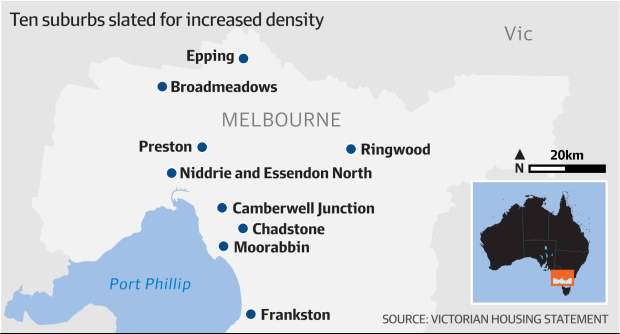“With [Victoria’s] population growing and dwelling completions weakening, the housing market has remained very tight,” the paper said.
“The rental vacancy rate remains around 1 per cent and advertised rents were up around 11 per cent over 2023.

“The recovery in dwelling prices was more muted in Melbourne than some other capitals, with prices rising 3.5 per cent year-on-year in 2023 and down slightly to start 2024 – though we see prices rising over 2024.”
Opposition finance spokeswoman Jess Wilson said housing affordability in the state was getting worse after treasurer Tim Pallas last year outlined plans to extract $4.7 billion from property investors over the next four years.
Mr Pallas said investors would pay an average of $1300 in extra land tax.
“Labor’s nation-leading property taxes are putting upward pressure on rents and driving critical investment in new housing supply interstate,” Ms Wilson said on Tuesday.
“Victoria must be seen as a competitive and attractive place to invest, but the Allan Labor government’s mismanagement of the housing sector continues to hold back Victoria’s economic growth.”
The tax slug, which hit 380,000 additional landowners, will raise $4.74 billion over the forward estimates by cutting the tax-free threshold for land tax from $300,000 to $50,000, imposing new yearly flat fees and increasing the rate of tax payable on properties over $300,000 by 0.1 percentage point.
A Victorian government spokesman said more than 30,000 homes had come into the state’s pre-assessment accelerated pathway since Labor’s housing statement was released last year.
“[Opposition Leader] John Pesutto and the Liberals openly campaign to block housing in their own electorates, pushing up housing prices – they have no credibility when it comes to increasing housing supply,” he said, referring to Mr Pesutto’s attack on Labor’s plans to increase housing density in established areas back in 2016.
Unit values are now rising at a faster rate than houses in more than half of all suburbs nationwide as a growing number of buyers take advantage of the sector’s cheaper price points after years of sluggish growth, data from CoreLogic shows.
CoreLogic research director Tim Lawless said the worsening affordability for houses, tight supply in the detached housing sector and increased demand from first-home buyers and investors could fuel sustained upturn in the sector over the near- to medium-term.




